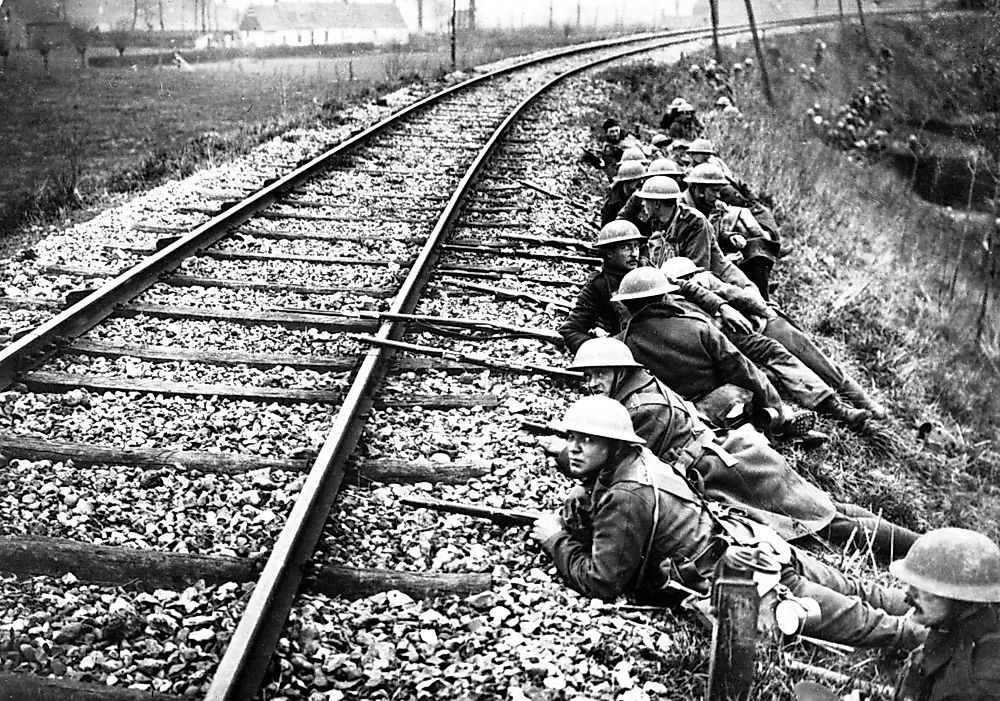The German Spring Offensives of World War I

Background
On March 3rd, 1918, the new Bolshevik government of Russia surrendered to the Central Powers and signed the Peace Treaty of Brest-Litovsk. As the Eastern Front cooled down, Germany was now able to fully concentrate on its war against the allied forces. It also allowed Germany to shift around fifty divisions from the Eastern Front to increase its strength at the Western Front.
At the same time, the Germans were seriously concerned about the USA’s entry in World War I since April 1917. There was information that America was making large scale preparations to join the Allied Forces against the Central Alliance. It is for this reason that General Erich Ludendorff was planning for a fresh offensive against the British and French Forces since October 1917 at the Western Front. The peace treaty with Russia provided him a great opportunity to execute his plan for a decisive victory over the Allied Forces.
The Germans selected a dry area near Saint-Quentin on an eight kilometer long front from La Fere to Arras. This sector of the Western Front was defended by the British Army. Ludendorff did not set any strategic and territorial targets for the offensive, and proceeded with the objective of destroying the British line and pushing the British Forces out of the area to isolate both British and French Forces from each other, and eventually force the British Army to fall back from the English Channel.
German Spring Offensives
Operation Michael
On March 21st, 1918, the German forces launched their combat operation with light artillery; around 1000 mortars and guns made heavy bombardment for five hours that made way for effective infantry advance. Specially trained storm trooper units consisting of the best men from all the divisions led the advance. German Stormtroopers successfully applied infiltration tactics and made outstanding achievements. Within the first 16 days, Operation Michael helped the Germans capture 3100 square kilometers of area and around a hundred thousand prisoners. Still, the German army failed to gain any strategic targets and even failed in isolating the British Forces from their skillful French allies.
Operation Georgette
On April 9th, 1918, the Germans launched a second operation of offensive in the Flanders sector to distract the Allied Forces from Operation Michael and capture Hazebrouck Rail Hub. The Germans made quick advances at first but failed to achieve their goal due to bad strategical orders of General Ludendorff.
Operation Blucher
On May 27th, 1918, a new operation was launched in the Chemin des Dames sector as a diversion for the French army so that Germany could conduct another operation in the Flanders sector with ease. The German forces reached within ninety kilometers of Paris, yet again without any sizeable strategic damage to the Allied Forces.
Operation Gneisenau
On June 9th, 1918, the Germans attacked Matz River but were forced to retreat facing heavy French resistance.
Fourth Battle Of Champagne
This was the last and final offensive of the German spring offensive. The Germans faced a surprise counter-attack by the French army and failed completely.
Allies Counter Offensive
In August 1918, the Allied Forces launched a counter-attack including one million fresh American soldiers. The Allies’ counter-attack forced the Germans to retreat from all the area captured during the Spring Offensive and lead to severe damage to the Hindenburg Line. The Spring Offensive is known as the deepest advances by the Germans as an offensive and by the allies as a counter attack of World War I.
Casualties
The Allied Forces faced an estimated 900,000 casualties, while the German army suffered around 700,000 casualties.
Reasons for Failure
- Poor commands and uncertain goals
- Unplanned, repeated, and delayed reinforcements
- Improper infantry management
- Fresh deployment of one million US soldiers











